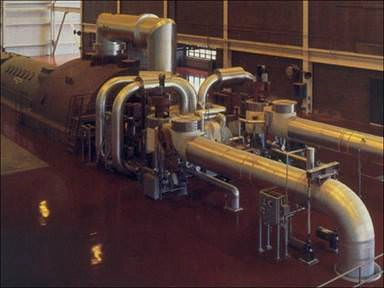The complex requirements of cleanrooms create a host of challenges for mechanical, plumbing and electrical engineers. One of the most pressing issues today concerns the consumption of power by complicated mechanical systems.
Traditional energy sources are expensive, unreliable and toxic to the environment. To address this growing problem, industrial and cleanroom engineers are returning to the once-common practice of co-generation.
Cleanroom Power Pressures Continue to Mount
Across all sectors, factors related to energy consumption are more pressing than ever. The cost of power continues to increase, as does the need to decrease the environmental impact of cleanroom construction, operation and processes.

Reliability is another critical factor — more so for the cleanroom environment than for many other types of industrial facilities.
But the challenge that raises the most alarms is the scarcity of power. In the early 2000s, Silicon Valley experienced a crisis when power transmission lines reached capacity. As the U.S. electrical grid and power infrastructure continues to degrade, cleanroom engineers are tasked with finding other workable options.
What Is Cleanroom Co-Generation?
Co-generation, also known as combined heat and power, or CHP, is the process of generating both power and heat at the same time. When heat and power are produced independently, thermal energy is wasted. Co-generation strategies improve thermodynamic efficiency by putting the otherwise-wasted thermal energy to use.
Traditionally, CHP engineering strategies were used in large industrial complexes with a central plant. Today, cleanroom engineers are adding co-gen capacity onsite. Because the technology is scalable, it can be designed to suit a variety of needs.
How Can Co-Generation Benefit Your Cleanroom Project?
Co-generation provides three essential benefits to a cleanroom project: lower cost, increased reliability and reduced environmental impact.
Because power is generated on-site, costs remain stable over time. The same cannot be said for municipal grid utility rates, which continue to rise exponentially. This allows for more reliable cost projections and reduced future operating costs. Many facilities using CHP strategies reach the payback point on co-generating technology within a matter of years.
And as the cleanroom facility will be generating its own power, reliability is in the hands of your facility’s management team. As long as your plant is well-maintained, it will provide a reliable and high-quality source of power.
Finally, CHP technologies are much better for the environment than traditional power options. The carbon footprint of co-generation is substantially less than grid power and individual heat and power generation.
Contact DesignTek Consulting Group LLC to discuss the feasibility of adding co-generation capacity to your new or existing industrial facility. We offer a full range of plumbing, mechanical and electrical engineering services as well as construction management and cleanroom design.
.png)